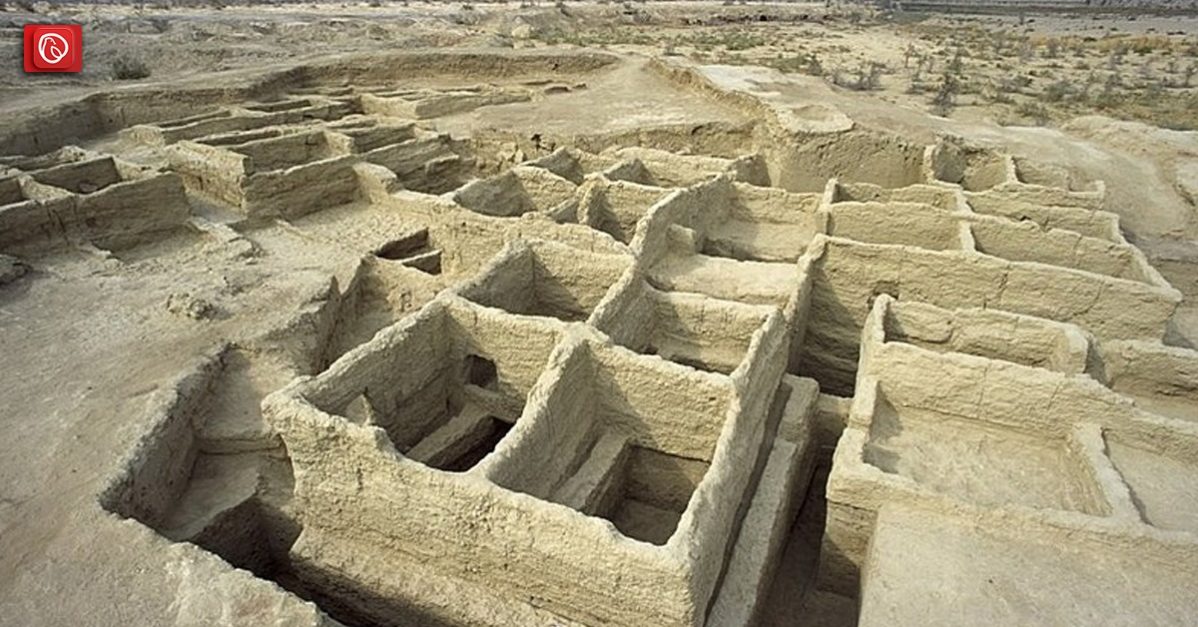Mehrgarh is a significant archaeological site dating back to the Neolithic and Chalcolithic periods. It lies at the base of the Bolan Pass on the Kacchi plain in Balochistan. The site has a remarkable history of continuous occupation from approximately 7000 to 2600 BC, making it the earliest known Neolithic settlement in the northwest region of the Indian subcontinent.
Excavations at Mehrgarh have revealed evidence of early agricultural practices like cultivating wheat and barley, as well as pastoral activities, including raising cattle, sheep, and goats. The site also exhibits early instances of metallurgy. Let’s learn more about Mehrgarh with graana.com
Mehrgarh’s strategic location on the major route connecting Afghanistan and the Indus Valley suggests its involvement in ancient trade connections between the Near East and the Indian subcontinent, likely established at an early stage.
| Archaeological Period | Chronology | Date Range | Mound |
| IA | Aceramic Neolithic | c. 6500-6000 BC | MR3 |
| IB | Ceramic Neolithic | c. 6000-5500 BC | MR3 |
| II | – | c. 5500-4500 BC | MR4 |
| III | Early Chalcolithic | c. 4500-3500 BC | MR2 |
| IV-VII | Chalcolithic | c. 3v 500-2500 BC | MR1 |
The site of Mehrgarh holds an archaeological sequence that extends over 11 metres deep, covering a period from the seventh to the third millennium BC. It is characterised as a typical archaeological tell site, which means it is an artificial mound formed by the accumulation of mudbrick structures constructed by generations of inhabitants. The excavators of the site have outlined the following chronological sequence:
Aceramic Neolithic
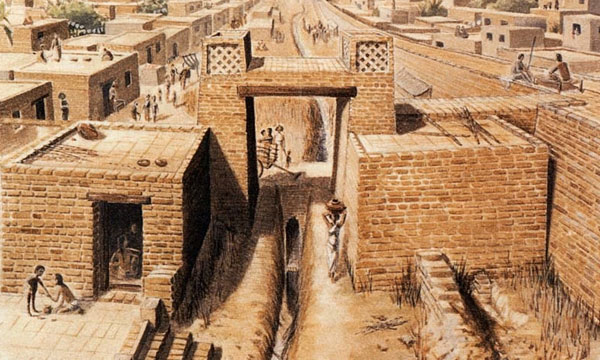
The initial settled area of Mehrgarh is located in a section referred to as MR.3, situated in the northeastern corner of the vast site. Around 7000-5500 BC, Mehrgarh was a small village engaged in farming and pastoral activities, characterised by mud brick houses and granaries. The inhabitants of this period utilised local copper ore, basket containers coated with bitumen, and a diverse range of bone tools.
The people during this time relied on various plant foods, including domesticated and wild six-rowed barley, domestic einkorn, and emmer wheat, as well as wild Indian jujube and date palms. Additionally, they practised herding sheep, goats, and cattle. The region’s fauna provided resources for hunting, with animals such as gazelle, swamp deer, nilgai, blackbuck onager, chital, water buffalo, wild pig, and even elephants being part of their hunted prey.
The early residences in Mehrgarh were standalone, multi-room rectangular houses constructed using elongated, mortar-sealed mud bricks. Strikingly similar to the Prepottery Neolithic (PPN) hunter-gatherers of early 7th millennium Mesopotamia, these structures were a notable feature.
Burials were carried out in brick-lined tombs and accompanied by shell and turquoise beads. Even at this early stage, the shared characteristics in crafts, architecture, agriculture, and funerary practices suggest a potential connection between Mehrgarh and Mesopotamia.
Neolithic Period II (5500 to 4800 BC)
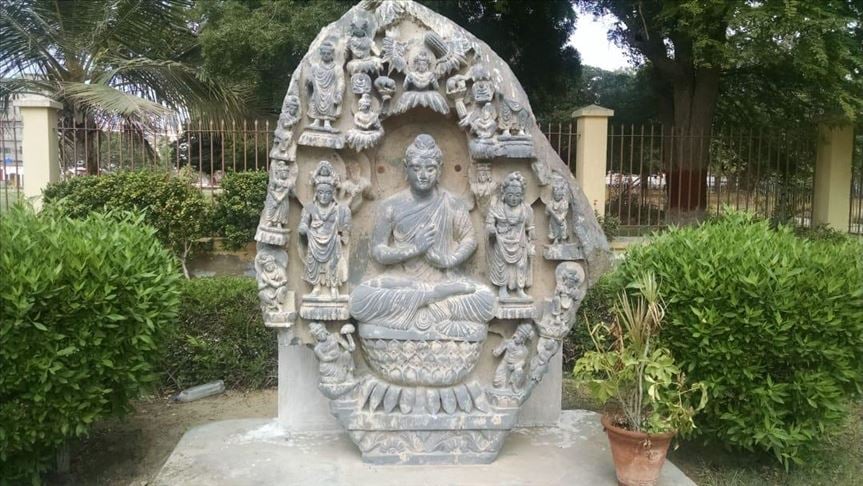
During the sixth millennium BC, Mehrgarh saw the establishment of agriculture as a prominent feature, primarily centred around locally domesticated barley, accounting for about 90 percent of the crops grown. Additionally, wheat from the nearby regions of the Near East also played a role in their agricultural practices.
The early pottery crafted during this period followed a sequential slab construction method. The site featured circular fire pits filled with burnt pebbles, as well as large granaries, also characteristic of contemporary Mesopotamian sites.
The buildings constructed using sun-dried bricks were notable for their large and rectangular structures, subdivided symmetrically into smaller square or rectangular units. Interestingly, these buildings lacked doors, and their lack of residential remains led researchers to hypothesise that some served as communal storage facilities for grains or other commodities shared by the community.
Other structures consisted of standardised rooms, surrounded by extensive open workspaces where various craft-working activities took place, including the early stages of bead-making, which later became a prominent feature of the Indus civilisation.
Chalcolithic Period III (4800 to 3500 BC) and Chalcolithic Period IV (3500 to 3250 BC)
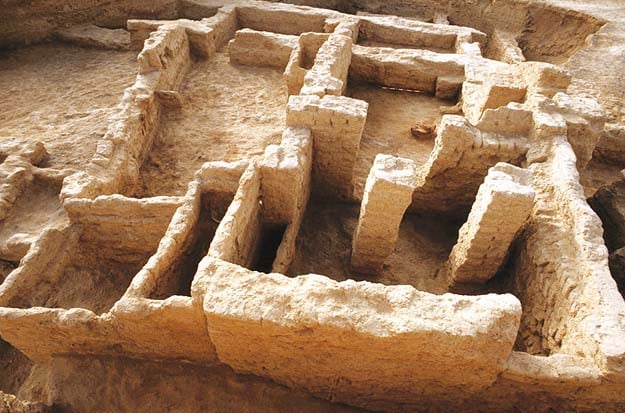
As the Chalcolithic Period III dawned upon Mehrgarh, the community had expanded to cover an area exceeding 100 hectares. The site now featured more significant spaces comprising groups of buildings, which were further divided into distinct residences and storage units.
These constructions displayed greater complexity, characterised by foundations made from pebbles embedded in clay. Notably, the bricks used in this period were produced using moulds, and the region boasted an array of finely painted wheel-thrown pottery, reflecting the growing sophistication of their craft and agricultural practices.
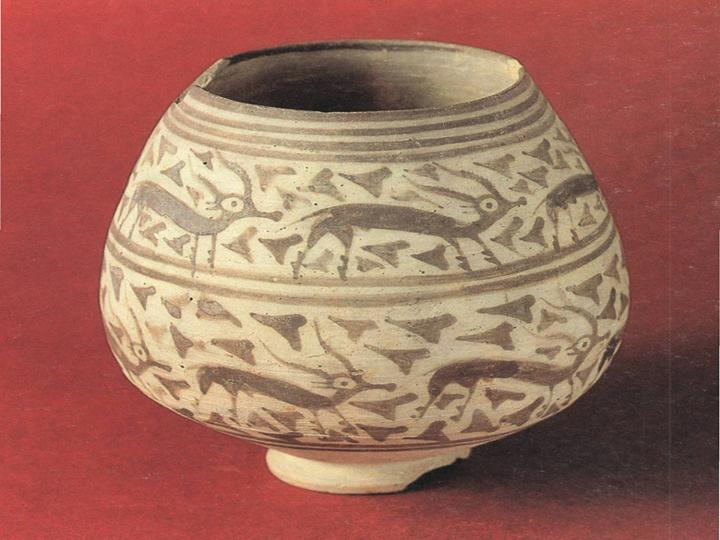
Continuing into the Chalcolithic Period IV, there remained continuity in pottery and crafts, yet noticeable stylistic changes started to emerge. The region witnessed a fragmentation into smaller and medium-sized compact settlements that were interconnected by canals.
Some settlements were composed of blocks of houses with courtyards, separated by narrow passageways. These areas notably featured large storage jars placed within rooms and courtyards indicating an ongoing emphasis on storage practices during this time.
Dentistry at Mehrgarh
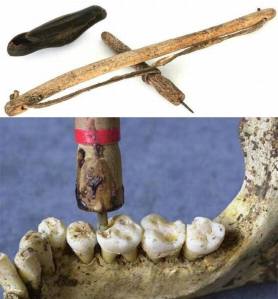
A recent study conducted during Period III at Mehrgarh revealed intriguing insights into early dental practices. Researchers discovered evidence of tooth drilling in burials located at MR3, a cemetery within the site. Examination of at least eleven molars showed distinct drill holes, which were conical, cylindrical, or trapezoidal in shape, indicating the use of bead-making techniques for dental experimentation.
Under light microscopy, some drilled teeth displayed concentric rings, marking the drill bit’s path, while a few showed signs of decay. Surprisingly, there was no indication of filling materials used in the drilled teeth. However, the presence of tooth wear on the drill marks indicated that these individuals continued to live after undergoing the dental procedure.
Notably, only four of the eleven drilled teeth showed clear signs of decay associated with the drilling process. The molars that were drilled, located at the back of both the lower and upper jaws, strongly suggest that the drilling was not for decorative purposes.
Flint drill bits, commonly used for producing beads, were identified as the characteristic tool employed at Mehrgarh for this dental experimentation. In modern experiments, researchers found that a flint drill bit attached to a bow-drill could create similar holes in human enamel in less than a minute. However, it is essential to note that these contemporary experiments were not conducted on living humans.
The discovery of dental techniques is relatively scarce, with only 11 out of 3,880 teeth examined from 225 individuals showing evidence of drilling. This indicates that tooth-drilling was a rare occurrence and appears to have been a short-lived experiment.
Interestingly, while the MR3 cemetery contains younger skeletal remains from the Chalcolithic period, no evidence of tooth drilling has been found beyond 4500 BC, suggesting that this practice ceased or became obsolete after that time.
Later Periods at Mehrgarh
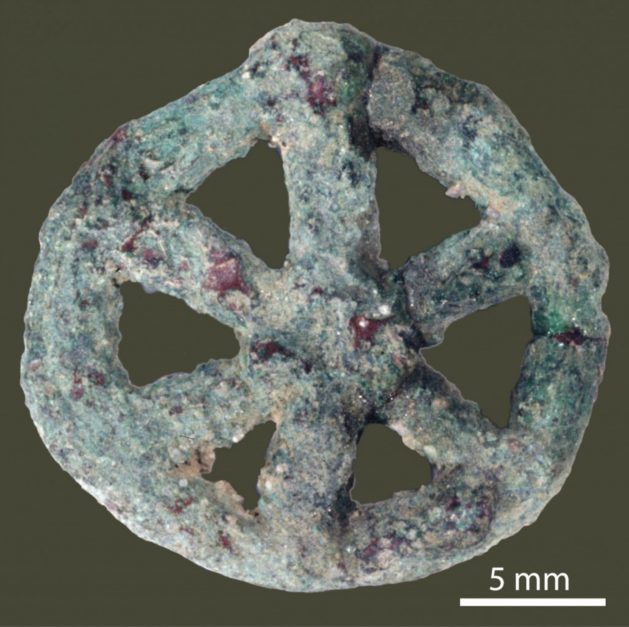
The Mehrgarh site has witnessed various craft activities , including flint knapping, tanning, and an expansion of bead production. There was a significant development in metal-working, with a particular focus on copper. These activities demonstrate the growing complexity and diversity of the community’s skills and industries.
Occupation at the site continued uninterrupted until 2600 BC, at which point it was eventually abandoned. This time frame coincides with the rise of the Harappan periods within the Indus civilisation, marked by flourishing settlements at prominent sites like Harappa, Mohenjo-Daro, and Kot Diji, among others.
The excavation of Mehrgarh was led by French archaeologist Jean-François Jarrige, and the site underwent continuous excavation between 1974 and 1986 by the French Archaeological Mission in collaboration with the Department of Archaeology of Pakistan. This international effort helped to uncover invaluable insights into the ancient history and cultural development of Mehrgarh.
FAQs on Mehrgarh
Following are some frequently asked questions regarding Mehrgarh.
What is Mehrgarh, and where is it located?
Mehrgarh is an ancient archaeological site located in Balochistan, Pakistan. It is situated at the foot of the Bolan Pass on the Kacchi plain.
When was Mehrgarh inhabited, and for how long?
Mehrgarh was continuously occupied from around 7000 to 2600 BC, spanning over several millennia during the Neolithic and Chalcolithic periods.
What significant findings have been made at Mehrgarh?
Excavations at Mehrgarh have unearthed evidence of early farming practices, including the cultivation of wheat and barley, as well as pastoral activities with the domestication of animals like cattle, sheep, and goats. The site also exhibits early metallurgical practices and the development of crafts like bead-making.
Are there any remarkable architectural features at Mehrgarh?
Mehrgarh features the classic archaeological “tell” site, an artificial mound formed by generations of superimposed mudbrick structures. The structures found at the site include large rectangular buildings made of mud bricks, granaries, and circular fire pits.
Is there any evidence of early dental practices at Mehrgarh?
Yes, during the Chalcolithic Period, researchers discovered evidence of tooth drilling in some individuals’ molars at Mehrgarh. Flint drill bits were used, similar to those employed in bead-making, indicating early experimentation with dentistry. However, this practice appears to have been rare and short-lived.
This is all about Mehrgarh. For more information, visit Graana.com.
